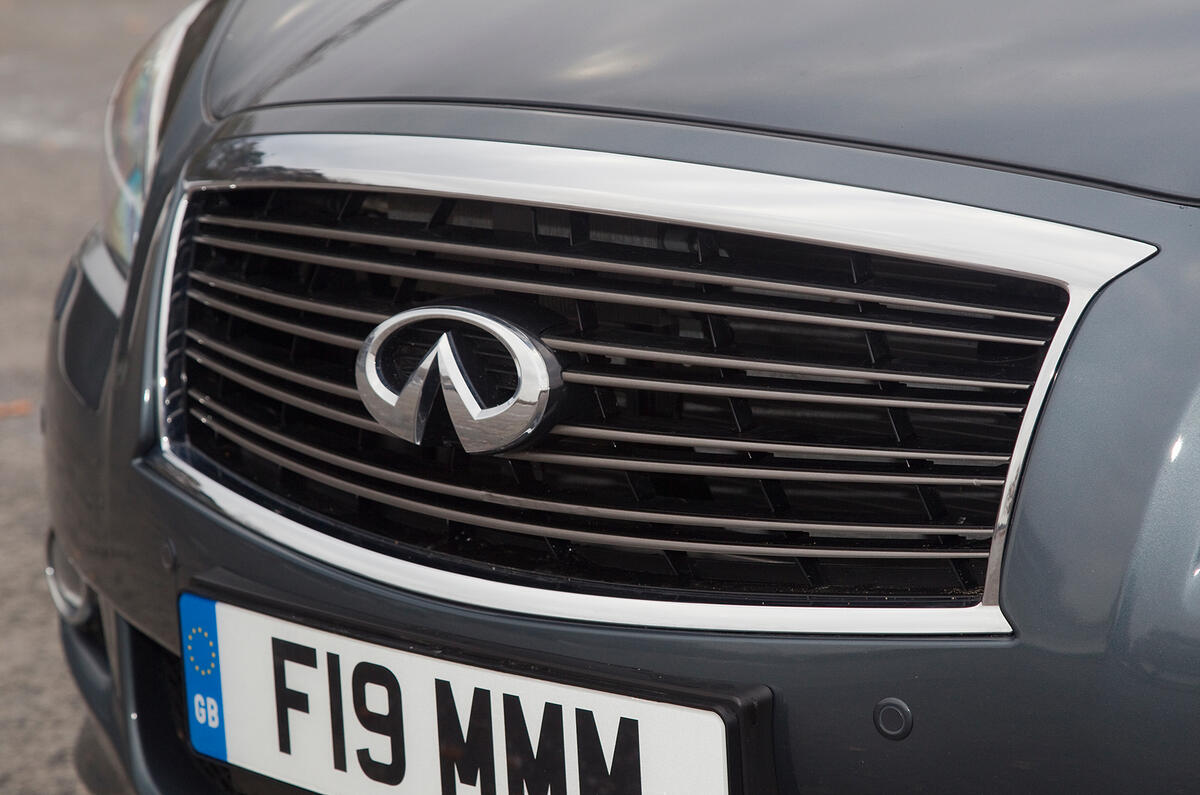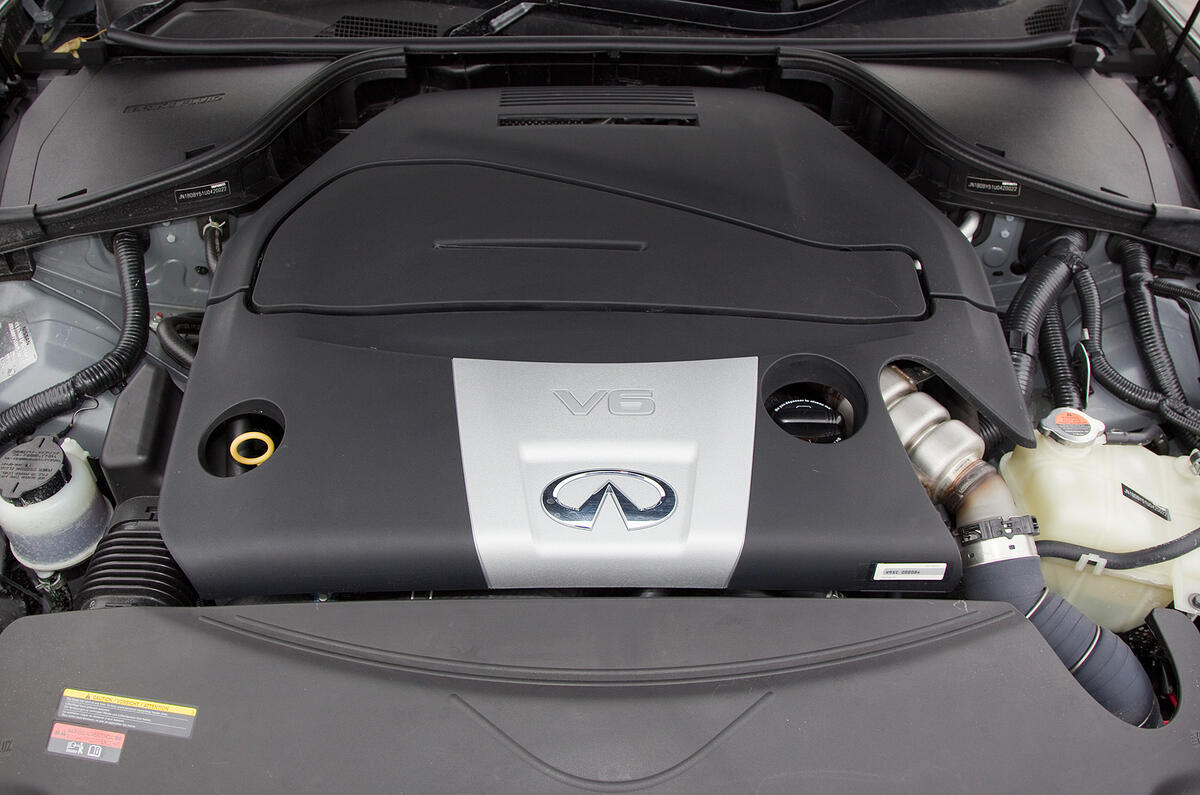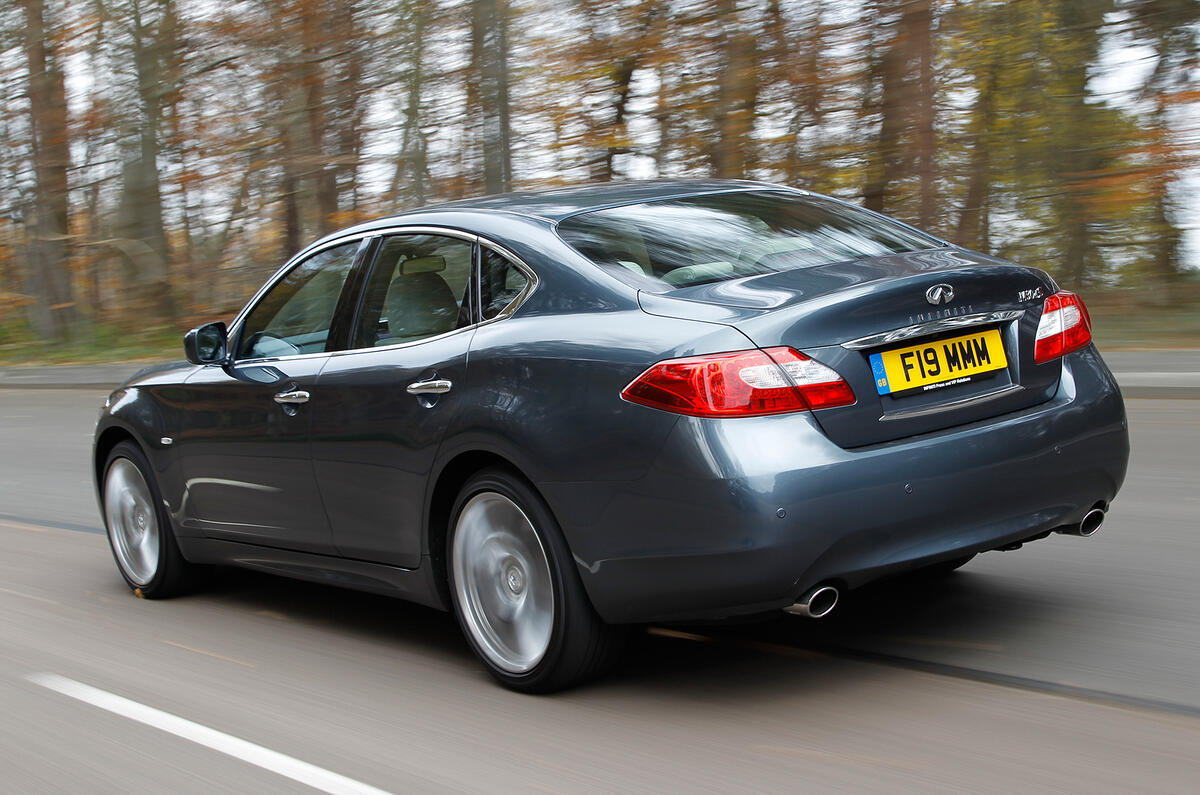The Infiniti M represents the latest chapter of Infiniti's short history. It started sales in 1989, in the US only.
It then added a couple of markets in the late 1990s, but since 2005 Infiniti has gone global, with European sales starting in 2008.
Now Infiniti is extending its reach into Europe yet further. And while it’s still unusual to see an Infiniti on UK roads, let alone one that does not belong to a marketing or dealer fleet, there’s no denying the company’s commitment to the launch of its range.
The M is aimed squarely at its established rivals rather than being an alternative to them. Nothing less than the BMW 5 Series and Mercedes-Benz E-Class find themselves on this M’s radar cruise control, which is no small ambition for a new entrant in Europe, regardless of how long it has been playing the game in the United States.
Most Ms will be sold with a 3.0-litre diesel engine under the bonnet, although you can also choose a 3.7-litre V6 or a rather interesting hybrid model that mates a 3.5-litre petrol V6 to an electric motor.
With the exception of the one model hybrid, trim levels follow the rest of the Infiniti range with GT, GT Premium, S (which adds four-wheel active steering) and S Premium.
used Infiniti M Series 2010-2013 cars for sale







































